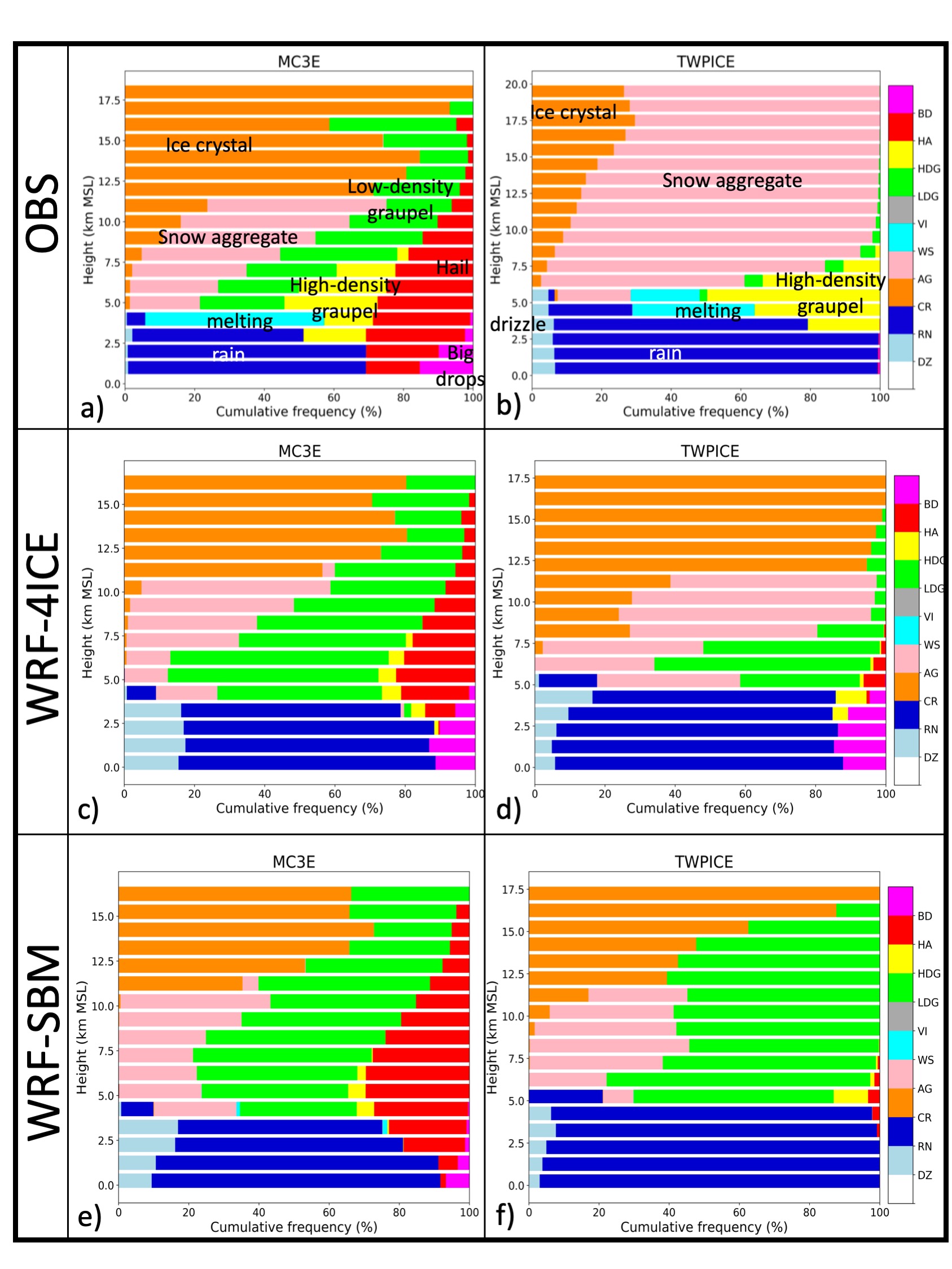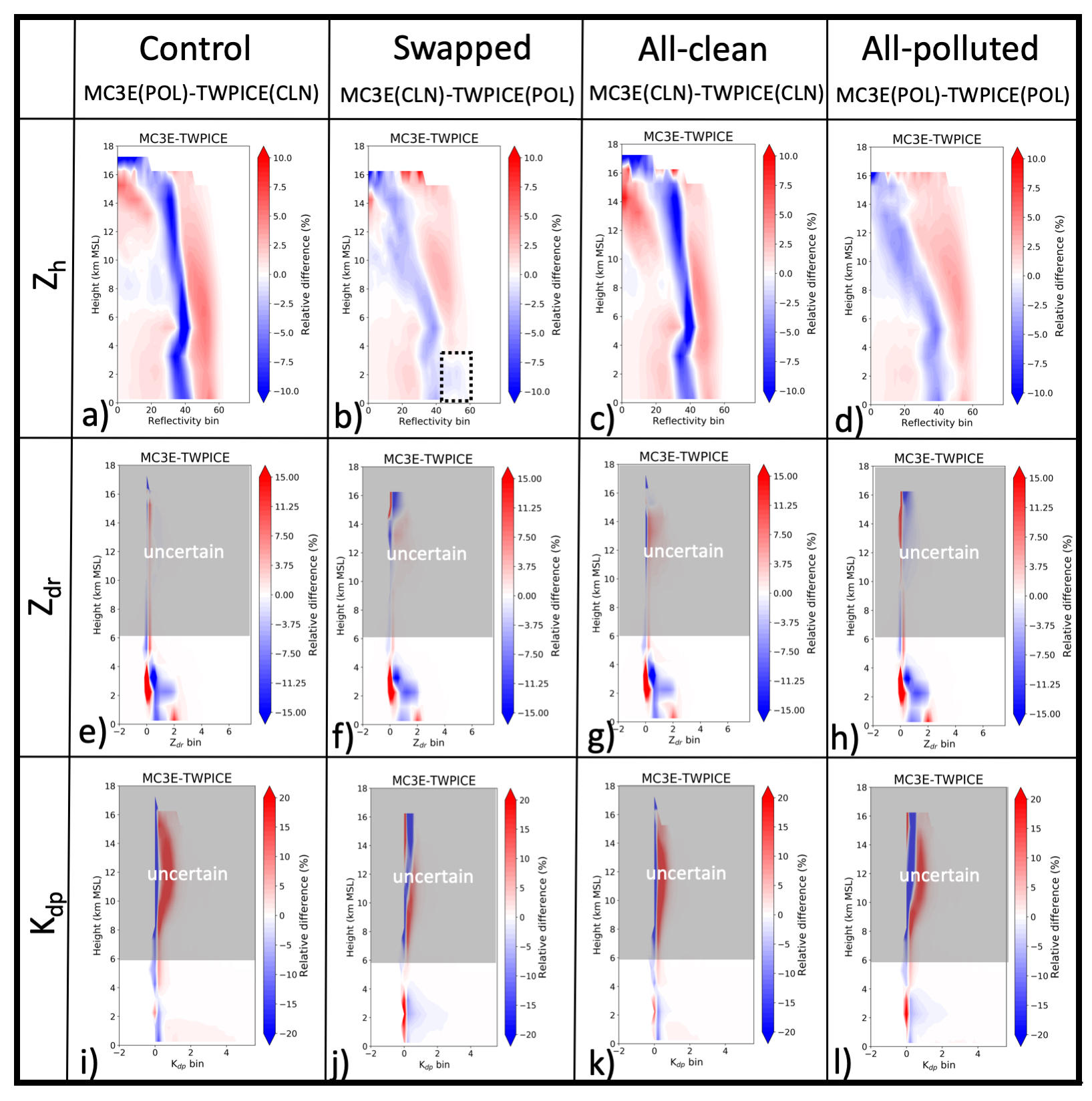Contrasting polarimetric radar characteristics between continental and maritime convective cores
Submitter
Matsui, Toshihisa — Earth System Science Interdisciplinary Center at University of Maryland
Rutledge, Steven A — Colorado State University
Area of research
Cloud-Aerosol-Precipitation Interactions
Journal Reference
Science
Using polarimetric radar signals and surface disdrometers, the microphysics of deep convective cores are characterized and contrasted between midlatitude continental and tropical maritime environments. Process-based simulations and a polarimetric radar simulator revealed that aerosols play an important role in generating such microphysics contrast in addition to the dominant role of background thermodynamics.
Impact
This study first employed ground-based polarimetric radar signals and retrieval to characterize detailed hydrometeor distributions of convective cores between continental and maritime environments, which had not been achieved in previous satellite studies. Detailed numerical microphysics simulations revealed for the first time the relative roles of aerosols and thermodynamics in characterizing maritime and continental convective cores.
Summary
This study contrasts midlatitude continental and tropical maritime deep convective cores using polarimetric radar observables and retrievals from selected deep convection episodes during the U.S. Department of Energy (DOE) Atmospheric Radiation Measurement (ARM) user facility Midlatitude Continental Convective Clouds Experiment (MC3E) and Tropical Warm Pool -International Cloud Experiment (TWP-ICE) field campaigns. The continental convective cores produce stronger radar reflectivities throughout the profiles, while maritime convective cores produce more positive differential reflectivity and larger specific differential phase above the melting level. Hydrometeor identification retrievals revealed the presence of large fractions of rimed ice particles (snow aggregates) in the continental (maritime) convective cores, consistent with the polarimetric signals. Regional cloud-resolving model simulations with bulk and size-resolved bin microphysics are conducted for the selected cases, and the simulation outputs are converted into polarimetric radar signals and retrievals identical to the observational composites. Both the bulk and the bin microphysics reproduce realistic land and ocean (L-O) contrasts in reflectivity, polarimetric variables of rain drops, and hydrometeor profiles. Sensitivity experiments are conducted by swapping background aerosols between the continental and maritime environments, revealing that background aerosols play a role in shaping the distinct L-O contrasts in radar reflectivity associated with raindrop sizes, in addition to the dominant role of background thermodynamics.



